Unistellar Odyssey Pro review: luxe smart telescope that delivers stunning night sky views
The high-end Unistellar Odyssey Pro is a super-smart telescope that makes exploring the night sky easy, even from a light-polluted backyard or balcony.
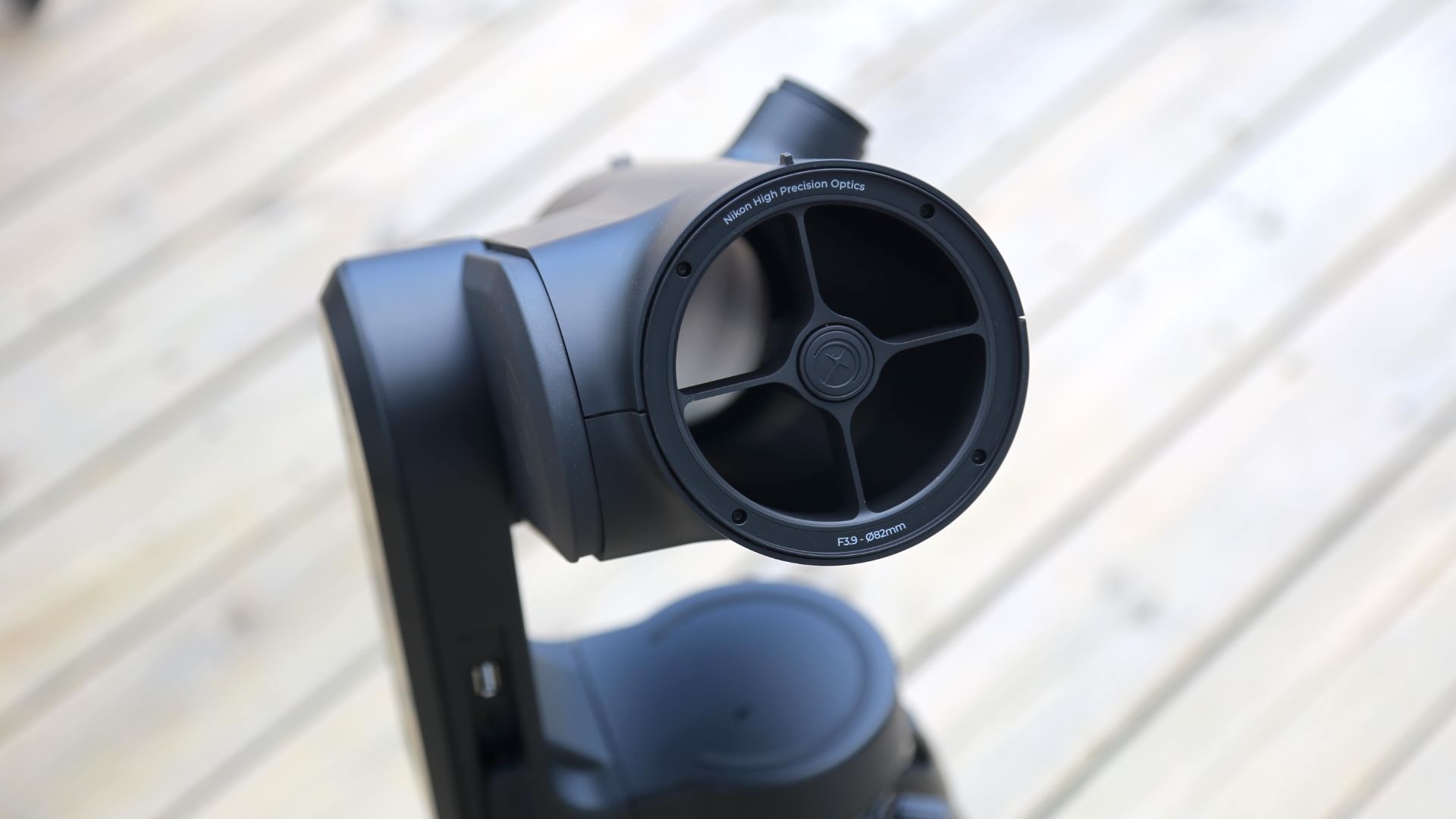
Both a traditional reflector telescope with an eyepiece and an all-in-one astrophotography rig, the Unistellar Odyssey Pro smart telescope is designed to make astronomy quick and easy wherever you live. With superb build quality and an excellent app, it’s easy to use, highly portable and produces good-looking images of the sun, moon and the deep sky.
-
+
Nikon-made eyepiece
-
+
Detailed images
-
+
Excellent build quality
-
+
Easy-to-use app
-
-
Planet images are basic
-
-
Only lasts for five hours on one charge
-
-
Eyepiece is an electronic OLED
-
-
Includes a proprietary tripod
Why you can trust T3

Light pollution makes the night sky so hard to see that smart telescopes are being left to reveal deep sky objects such as galaxies, nebula and star clusters using not an eyepiece but a camera sensor.
However, while the Unistellar Odyssey Pro is a smart telescope designed to cut through light pollution and send images to a smartphone app, it also comes with a Nikon-made electronic eyepiece.
A high-end smart telescope that’s a cinch to set up in minutes and use hassle-free, the Unistellar Odyssey Pro offers the best of both worlds. Designed to be used just as easily on a light-polluted balcony in a city as in a dark-sky destination, it’s easily portable yet solidly made.
Taking multiple images to live-stack and sending them to its smartphone app, the results are as impressive when imaging the moon as they are of distant deep sky objects, with colorful and clean images of both possible.
Here’s everything you need to know about the Unistellar Odyssey Pro—and how it can make both astronomy impressive, and astrophotography hassle-free.
[First reviewed May 2024]
Unistellar Odyssey Pro review
Price and availability
Marseille, France-based Unistellar has been making smart telescopes for a few years, but the arrival of the Odyssey Pro sees a new focus on slightly smaller, more portable and affordable products. But only just.
A complement to the Unistellar eVscope 2 and Unistellar eVscope eQuinox 2 in the company's ‘Expert’ range, the Odyssey Pro heads the new ‘Discovery’ range alongside the Odyssey.
Announced at the CES in Las Vegas in January 2024, the Odyssey Pro costs $3,599/£3,149 as is available to buy now directly from Unistellar. There’s also a special limited edition all-red version of the Odyssey Pro, which costs $4,099/£3,649. Odyssey Pro’s eyepiece-less sister product, Odyssey, has a lower resolution camera sensor and costs $2,099/£1,849.
Accessories include a backpack, which fits the Odyssey Pro and the Odyssey ($299/£269), and a solar filter, which costs $199/£179.
Specifications
- Optical design: Reflector
- Objective lens diameter: 3.4-inch/85 mm
- Focal length: 12.6-inch/320 mm
- Focal ratio: f/3.9
- Software supplied: Unistellar app
- Mount: Motorized alt-az
- Tripod: Proprietary
- Weight: 11lbs/5kg
- Storage capacity: 64 GB
- Battery life: 5 hours
- Connectivity: WiFi
- Level: Beginner to advanced
Features and hat's new
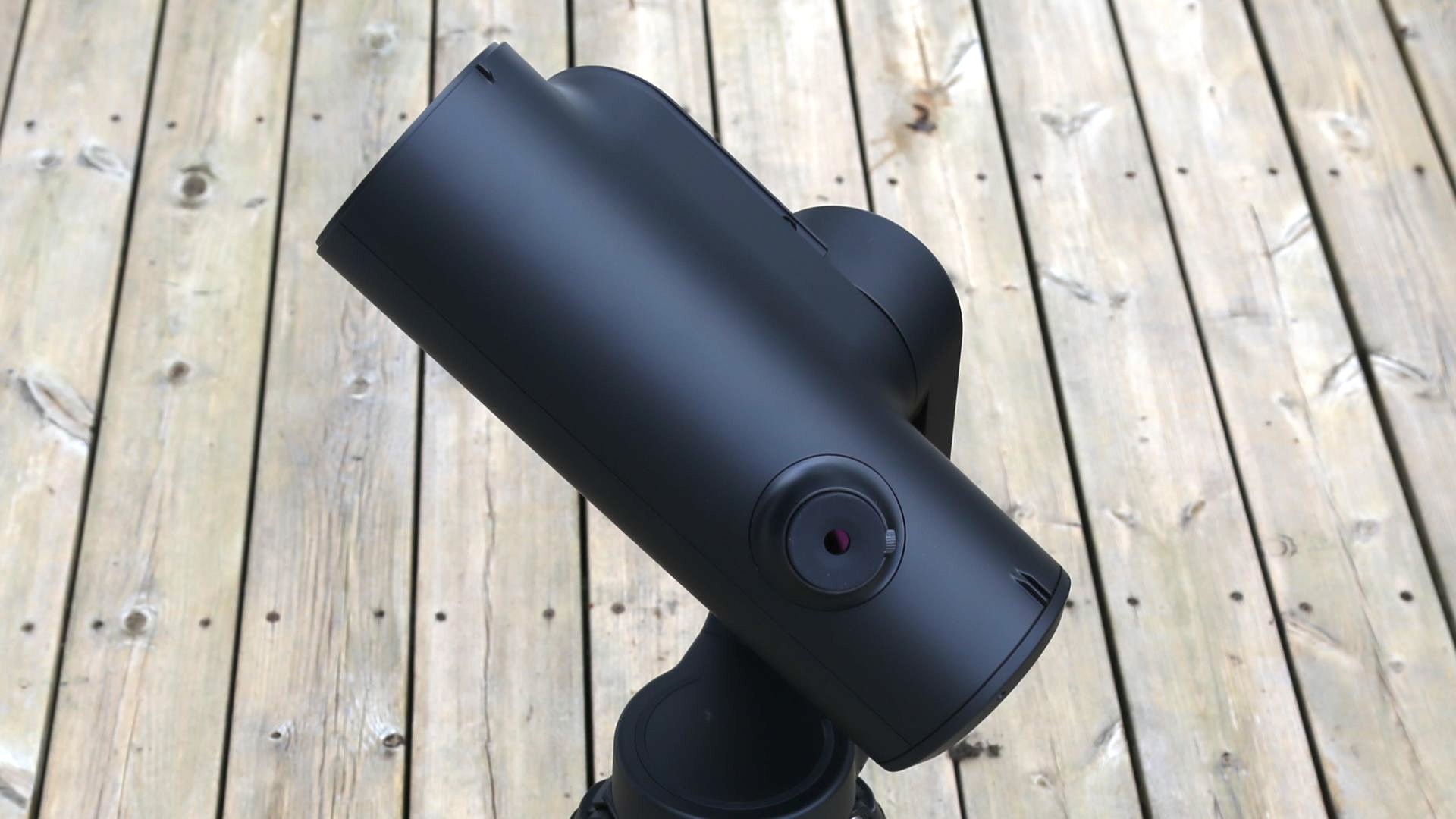
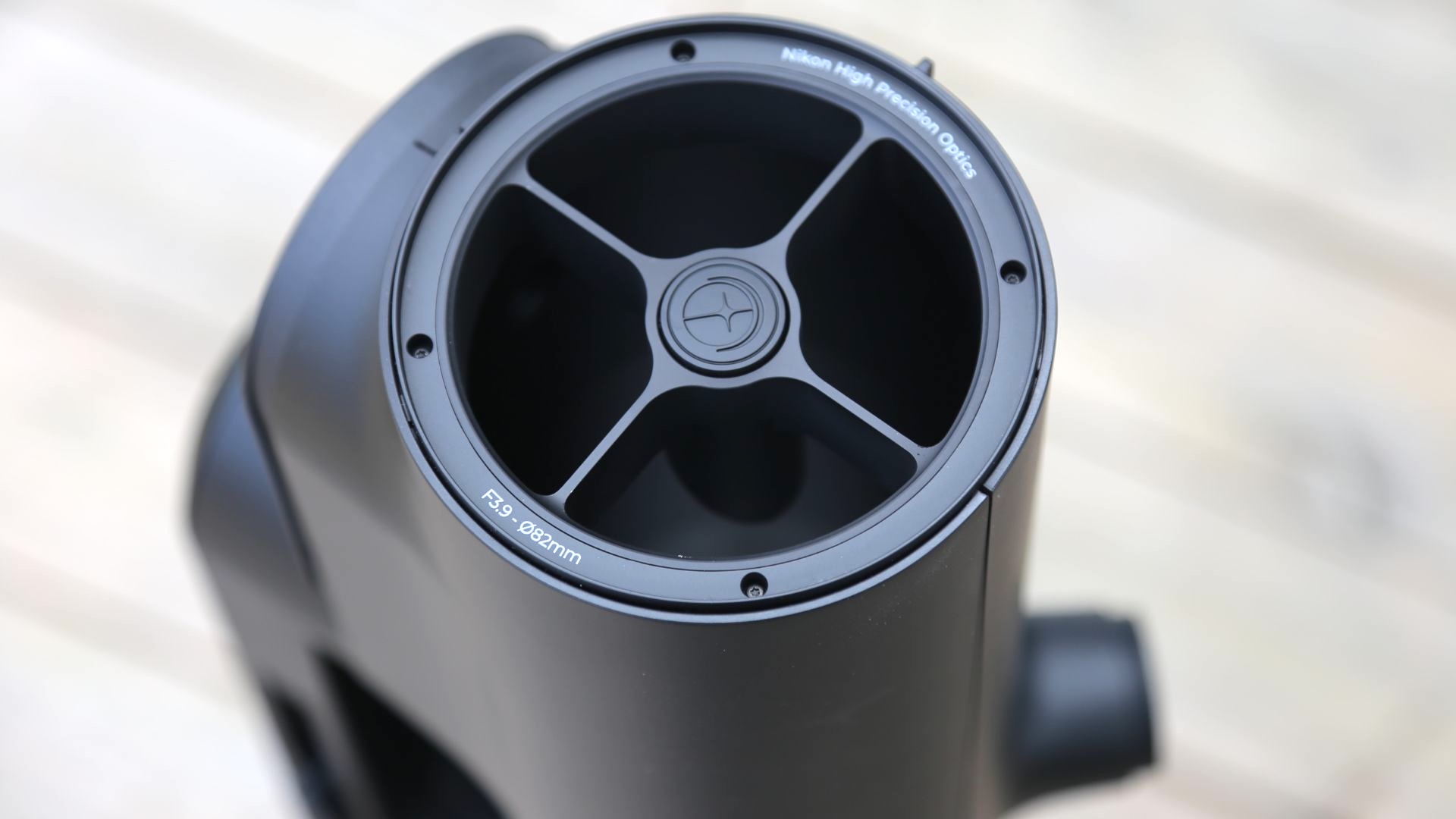
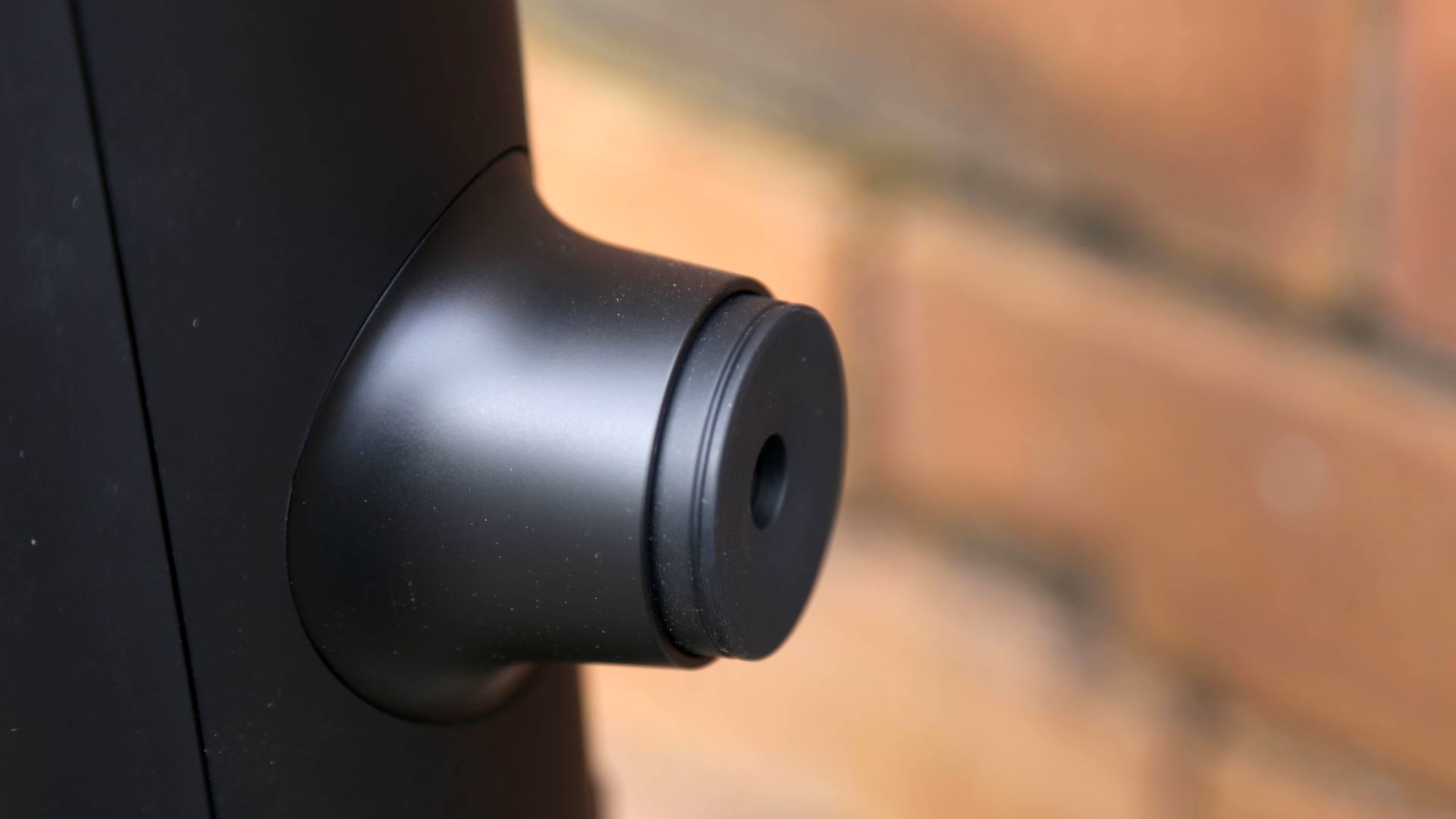
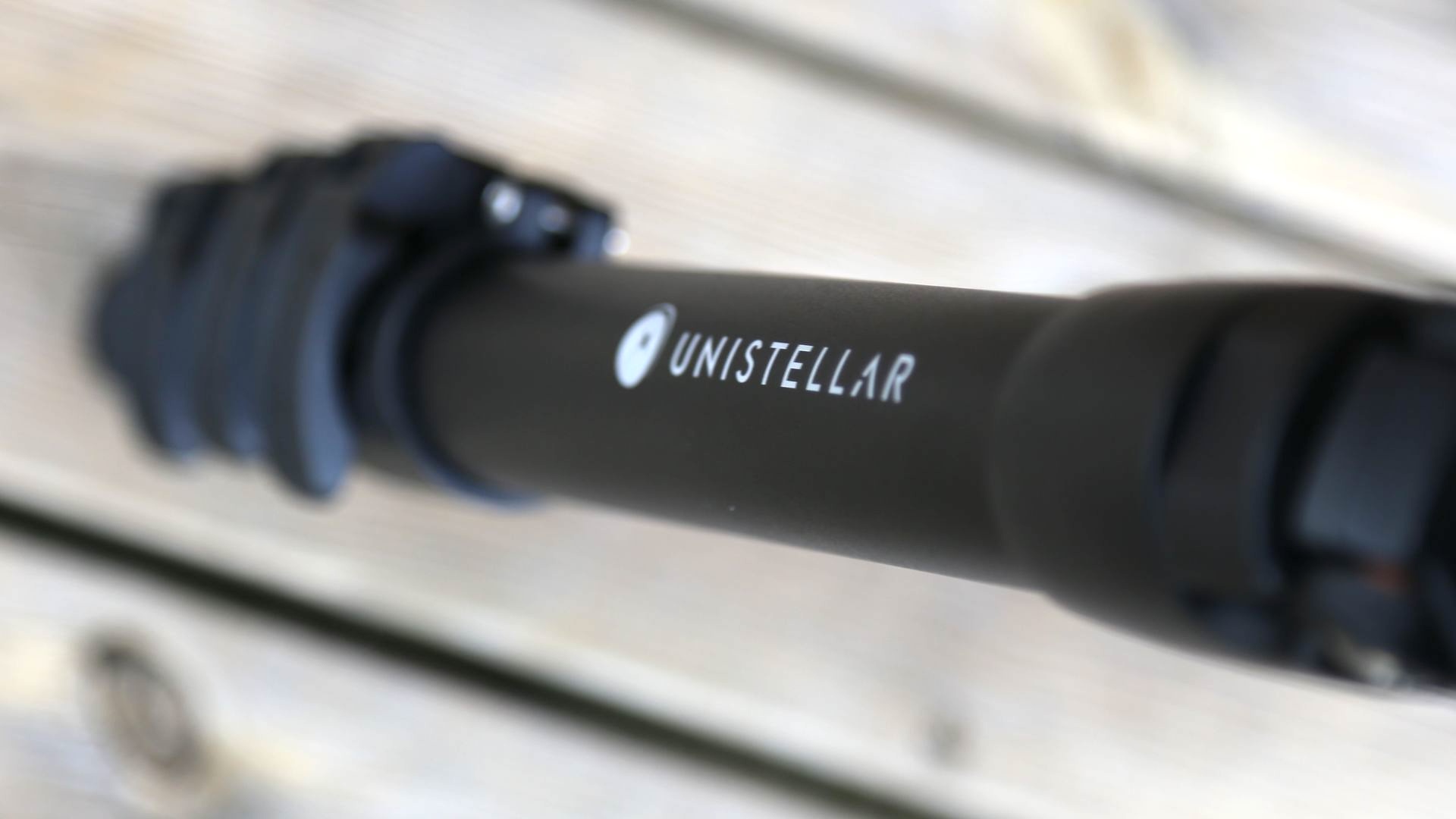
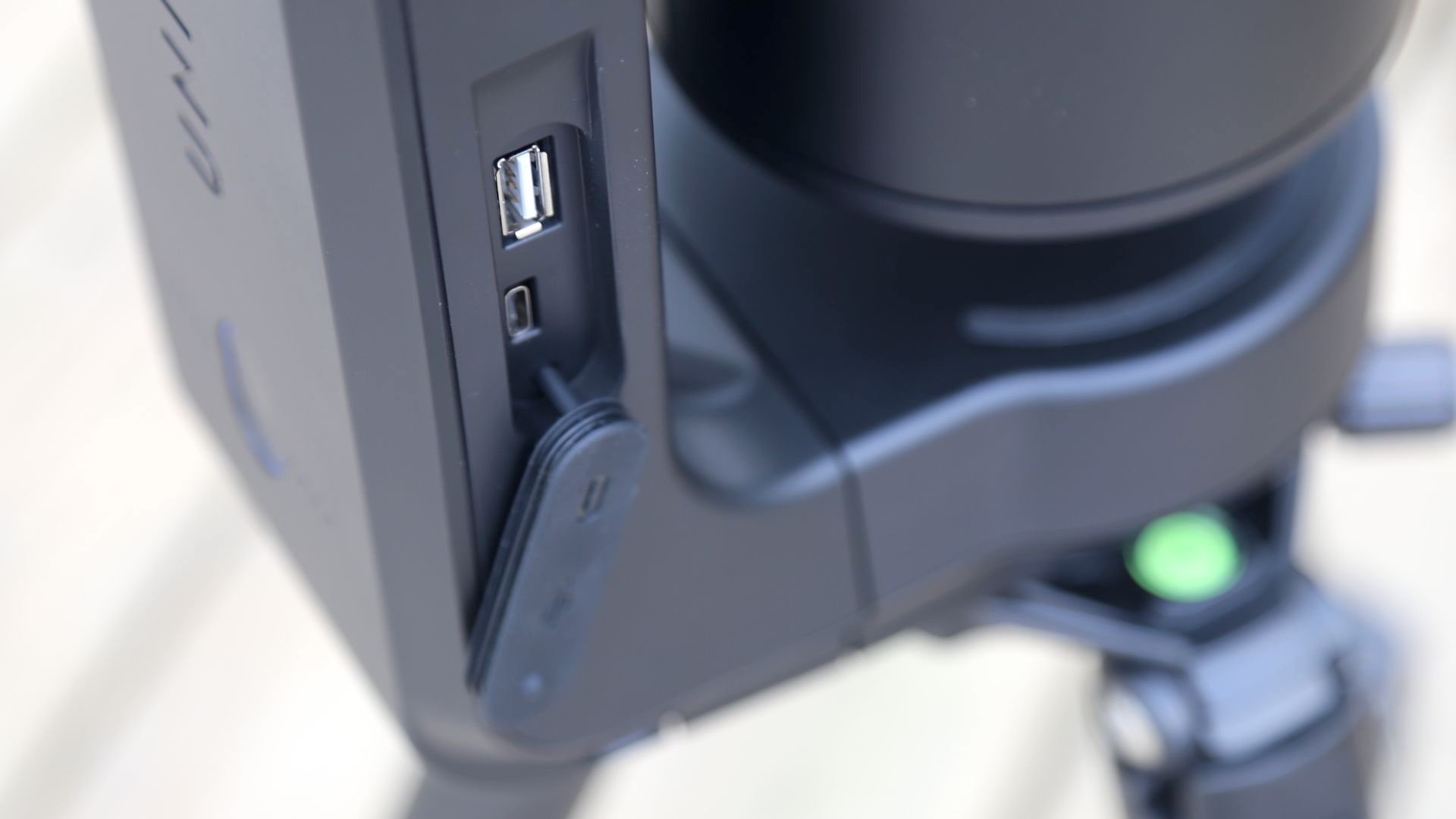
Don’t judge different smart telescopes only according to the megapixels they offer. The Odyssey Pro is capable of 4.1 megapixels compared to the Odyssey’s 3.7 megapixels, whereas rival – and much more affordable – smart telescopes like the ZWO Seestar S50 and Vaonis Vespera II offer 2 megapixels and 8.3 megapixels, respectively.
However, the key feature is optics and, most importantly, aperture – how much light is captured. The Odyssey Pro is built around a 3.4-inch/85 mm reflector telescope, which bests both of its rivals. It also has higher build quality and, on the side, an eyepiece. Few smart telescopes have an eyepiece to look through, largely because they focus light onto a camera sensor.
The Odyssey Pro does exactly that and, like other smart telescopes, sends the latest image to a smartphone app. However, it also puts its latest view on show for an electronic eyepiece, which Nikon makes in this case. It uses an OLED screen that offers inky black contrast.
What the Odyssey Pro also has over its lower-priced rivals is a tighter field of view. That way, it gets a better close-up view of tiny-looking galaxies, globular clusters and nebula in the so-called deep sky and planets.
However, it’s just big enough to get the moon and sun within its field of view. The ability to image all of this is down to some new ‘multi-depth’ tech that enables the Odyssey Pro to shoot the night sky in two different modes. It takes long exposure images for ‘faint fuzzies’ like galaxies and nebula. It continually stacks them in real-time, creating a clean-looking image that improves clarity the longer you leave it pointing at one object.
For solar system objects, fast-frames are the order of the day. As well as swapping between the two, the Odyssey Pro can also auto-focus, which removes a lot of hassle. It's the first reflector telescope that doesn't occasionally need collimating (aligning of its mirrors), too, which immediately makes it easier to use for beginners.
Setup and use
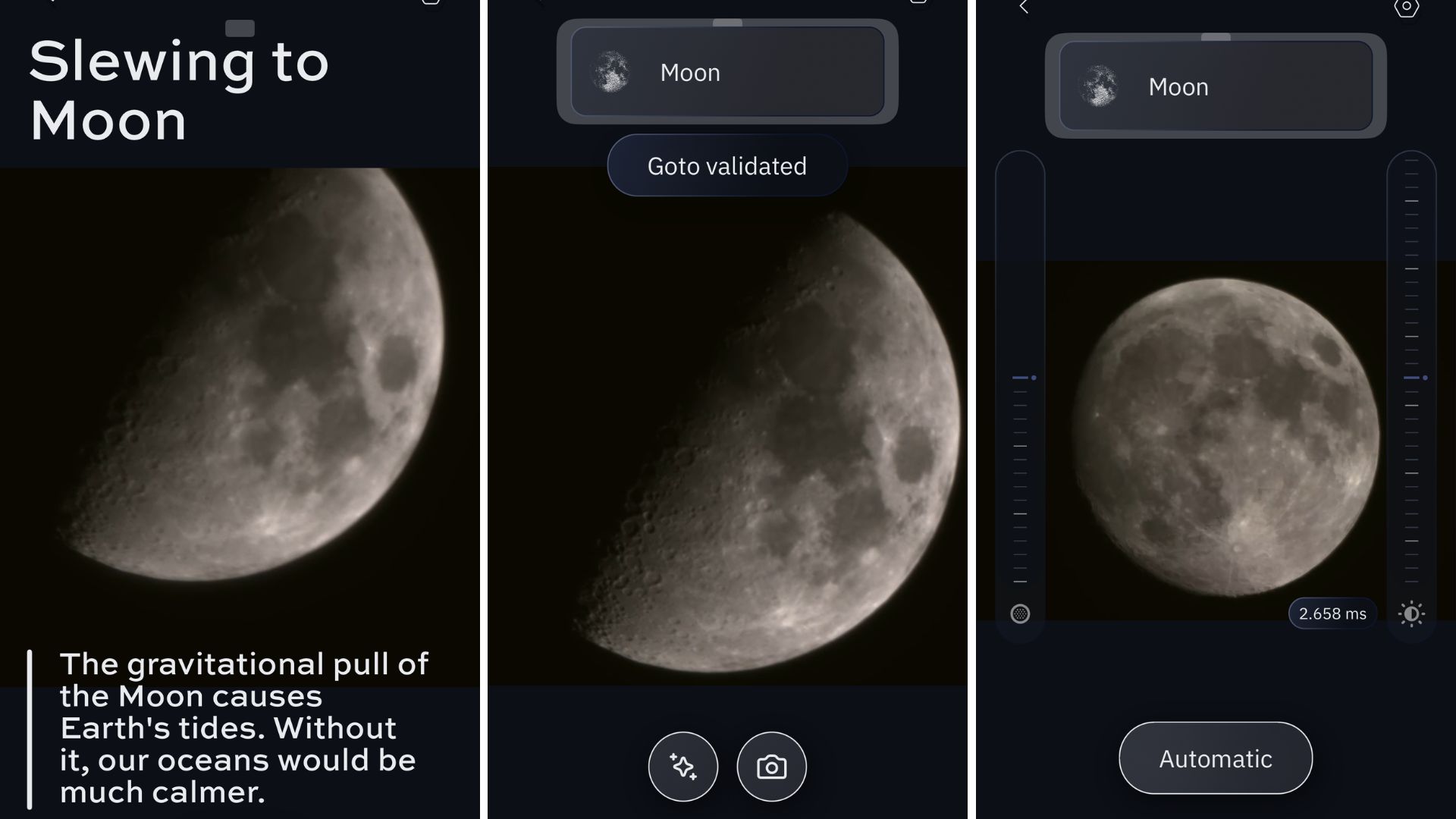
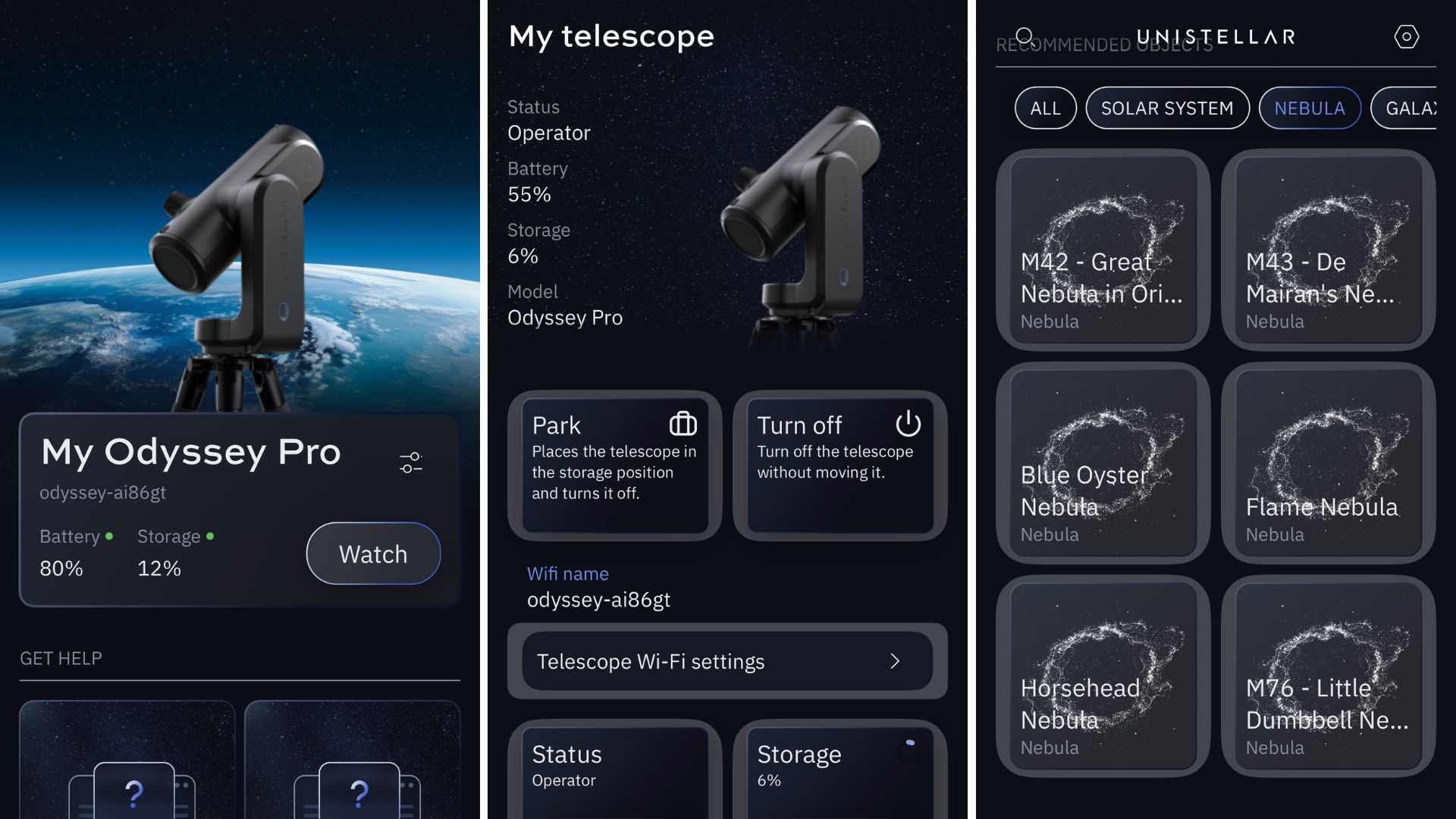
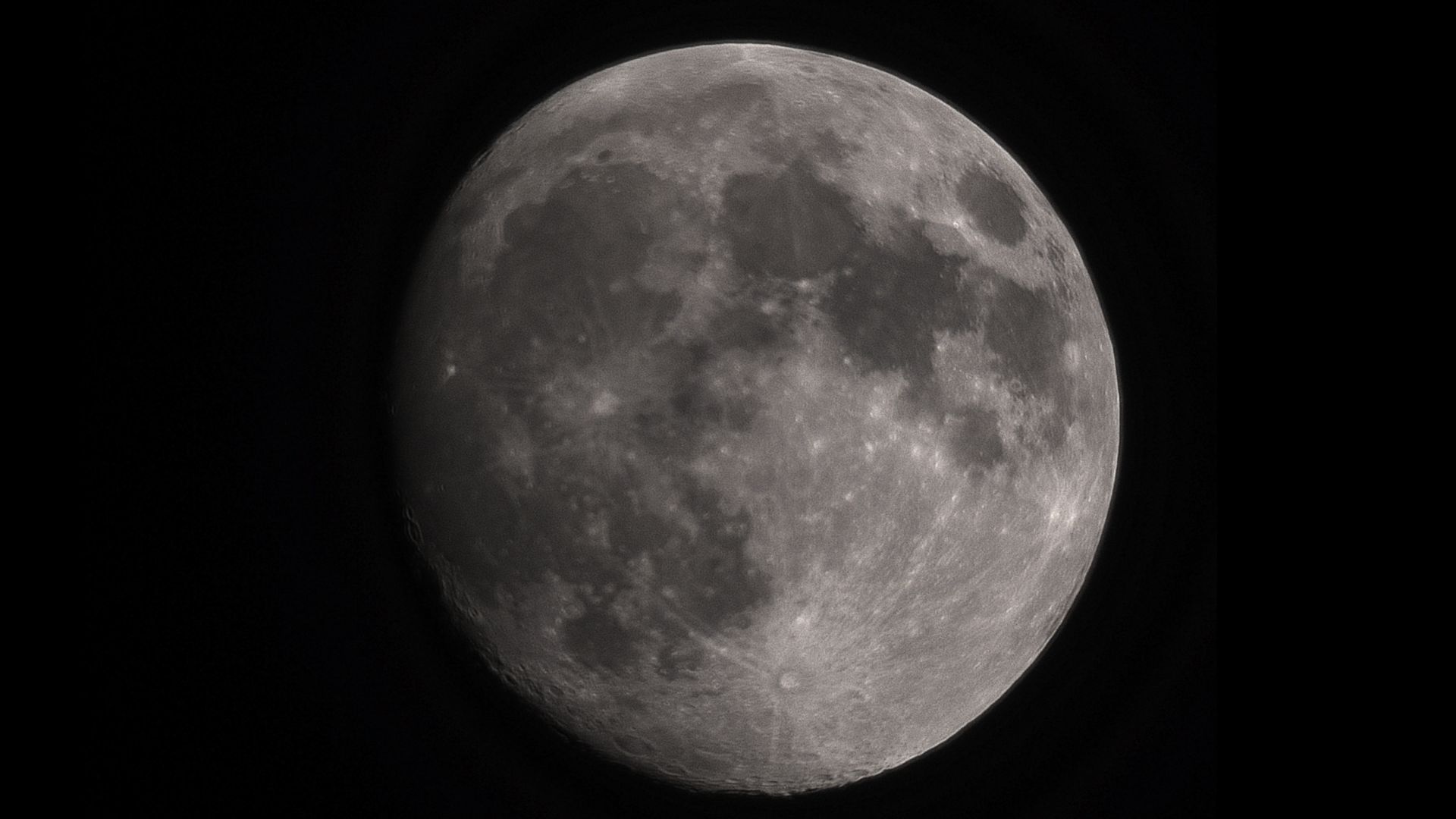
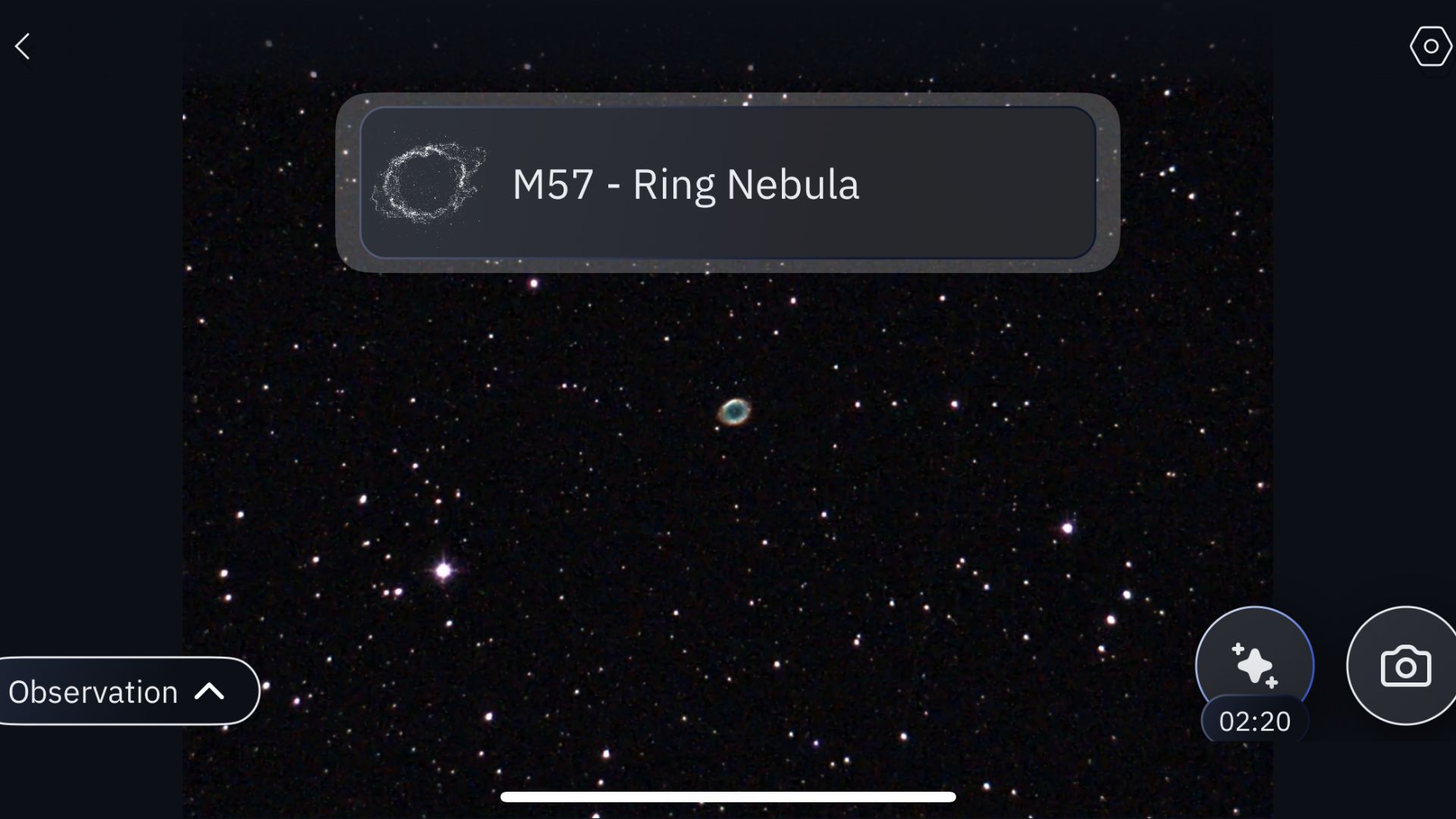
Auto-focusing works well on the Odyssey Pro and complements its excellent ‘smart star finder’ alignment tech. Together, they make it stupidly easy to use. You just put it outside in the dark on a clear night, attach a smartphone via Wi-Fi using the Unistellar app, and it plate-solves the stars, comparing what it can see with reference images of the night sky. It then shifts to whatever object you choose from its visual catalog in the app.
Once locked on a galaxy, it autofocuses and takes images and images, delivering them to your smartphone. If the telescope is physically positioned within a few meters of you (or your smartphone), you can sit and watch the latest image resolve. Or you can walk away from the ‘scope and let it do its thing, checking the app an hour or so later when you’re closer to it.
Some fainter objects take a while to become impressive, though you’ll get a good image of most things – save for the faintest of nebula – within a few seconds. Galaxies can, and should, be left for an hour or so, ditto most nebula, but globular clusters tend to look their best within minutes.
We were impressed by images across the board, save for planets, which looked fuzzy and lacked detail. However, with only Jupiter low on the horizon during the test, we’re reserving judgment for now.
The images it takes can be downloaded to your phone or shared on social media, complete with a caption, date, and time. However, a new feature added recently makes it possible to download raw images (such as PNG, TIFF, or FITS files) via the telescope's WiFi.
This is an attempt to widen the appeal of smart telescopes to astrophotographers, who usually want the freedom to post-process images as they want to. However, the built-in algorithms in the Odyssey Pro do a good job of producing contrast, colorful images.
Perhaps the only downside of the Odyssey Pro is its rather short battery life of five hours. However, with a USB-C slot on the side, it’s easy to attach a portable battery if you want to use it beyond that.
Verdict
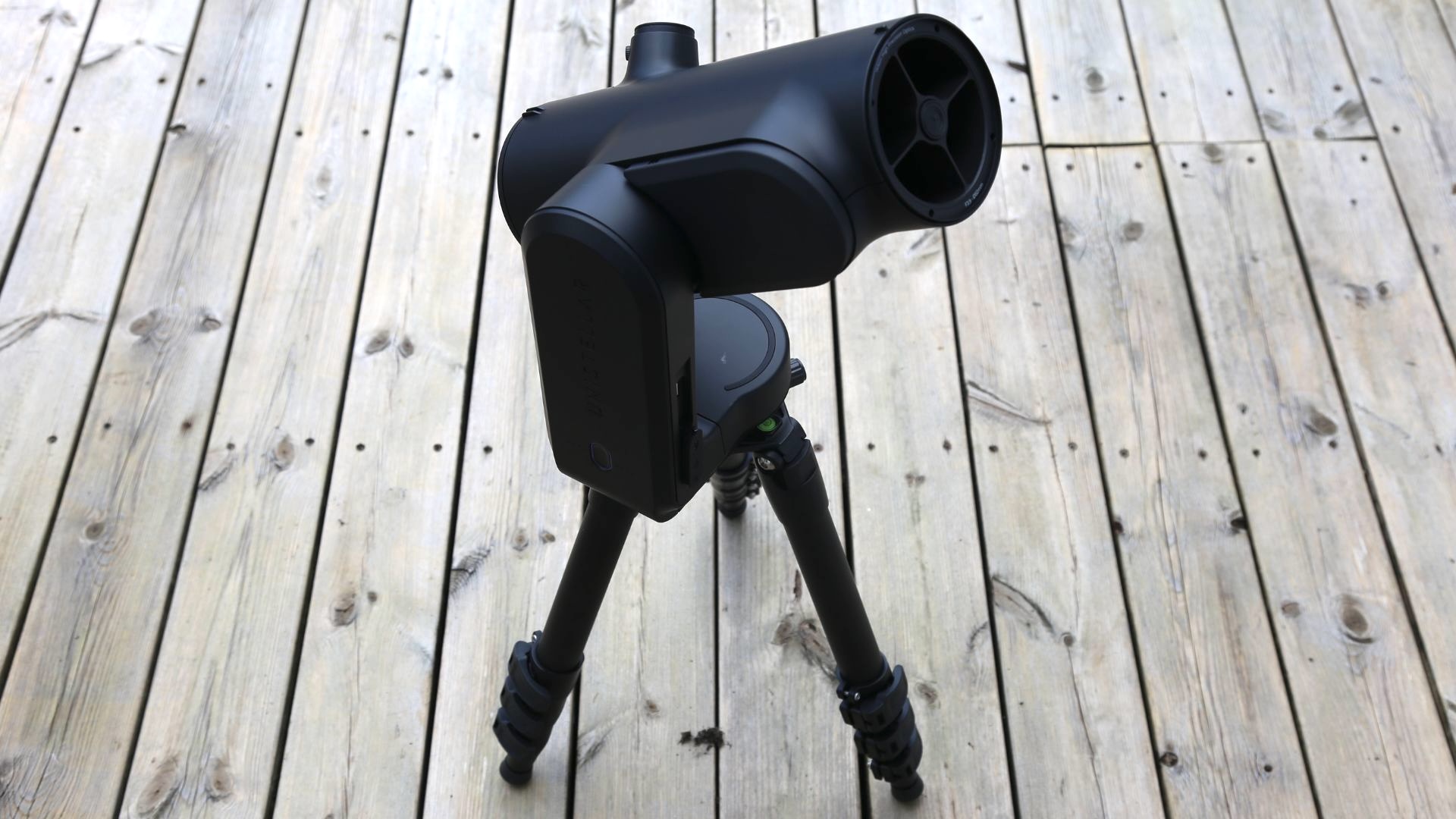
It’s a fact of modern life that light pollution makes it difficult to see deep-sky objects from cities using standard optical telescopes. However, as well as overcoming that by using novel astrophotography techniques and built-in filters, Unistellar has also positioned the Odyssey Pro as a high-end choice of smart telescope, boasting better optics.
Its new ability to more easily download lossless files will help its reputation among astrophotographers looking for a convenient, time-saving rig, but the Odyssey Pro is best thought of as a luxe choice for bringing awe-inspiring astronomical views to light-blighted suburban backyards and inner city balconies.
Also consider
This smart telescope may be expensive, but it’s a step down from the company’s premium offering, the Unistellar eVscope 2. An even more advanced product, with a Nikon-made electronic OLED eyepiece – but crucially, larger optics (a 4.5-inch reflector) – produces higher quality images.
Suppose you would rather have a traditional telescope that doesn’t take images but lets you see objects with your own eyes. In that case, the Celestron NexStar 6SE Schmidt-Cassegrain lets more light in than any current smart telescope. Deep-sky and solar system objects alike are hugely impressive through its optical eyepiece.
Sign up to the T3 newsletter for smarter living straight to your inbox
Get all the latest news, reviews, deals and buying guides on gorgeous tech, home and active products from the T3 experts
Jamie is a freelance journalist, copywriter and author with 20 years' experience. He's written journalism for over 50 publications and websites and, when he's not writing, spending most of his time travelling – putting the latest travel tech through its paces.
-
 Polar’s new subscription feature lands in the shadow of Garmin’s Connect+ rollout
Polar’s new subscription feature lands in the shadow of Garmin’s Connect+ rolloutPR genius or timing disaster? Polar’s new Fitness Programme adds adaptive training to its ecosystem
By Matt Kollat Published
-
 New Orient Star watches offer a glimpse of the magic within
New Orient Star watches offer a glimpse of the magic withinThere are two new skeleton pieces
By Sam Cross Published
-
 Netflix's most surprising 100%-rated sci-fi series returns with gorgeous trailer
Netflix's most surprising 100%-rated sci-fi series returns with gorgeous trailerLove Death + Robots is back for more
By Max Freeman-Mills Published